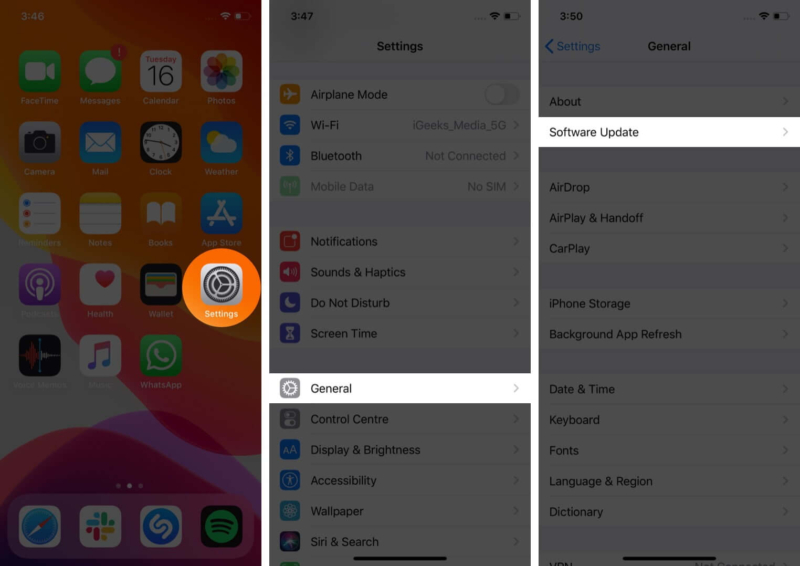There are several possible reasons as to why an iPhone won’t charge. It can be as simple as dirt in the charging port, or a faulty cable/adapter.
At the same time, it may be something more complex like a software bug that prevents your iPhone from charging. Whatever the cause may be, in this guide, you’ll learn the best solutions to fix an iPhone that won’t charge.
- Clean your iPhone’s charging port
- Check your charging cable for damage
- Restart your iPhone
- Force quit all apps
- Try plugging into another outlet
- Try a different charger
- Stop wireless charging
- Update to the latest iOS version
- Hard reset your iPhone
1. Clean your iPhone’s charging port
This may seem simple. But most of the time, carefully cleaning the charging port with a soft, dry toothbrush, a toothpick, or a paperclip will get the job done.
Over time, dust and debris accumulate in the interiors of the port. Removing any unwanted dusty visitors and carefully cleaning the lightning pin on the charging cable with a dry cloth may solve the problem.
If you’re still left to ask “I plugged it in! Why isn’t my iPhone charging?”, keep reading.
2. Check your charging cable for damage
Carefully inspect the charging cable and see if you notice any cuts or other damage. If you do, this may be the reason why your iPhone isn’t charging.
If you don’t see any physical damage on the cable, try to charge your friend or family member’s iPhone with the same cable. See if it works, and if it doesn’t, you can be certain the cable is at fault.
Sometimes the answer to why an iPhone isn’t charging lies in the cable that connects to it. Faulty knock-off charging cables may be the culprit. It’s almost always a good bet to go with a lightning wire that has MFi certification.
MFi is short for “Made for iPhone/iPod/iPad.” It’s a licensing program—and if you see the MFi logo on a product package, it means Apple has authorized the maker.
Usually, these products are made to work well with iPhones, iPads, and iPods. Here are some suggestions for the best iPhone cables:
- Best USB C to Lightning cables
- Best iPhone and iPad Lightning cables
- Short Lightning to USB cables for iPhone
3. Restart your iPhone
To restart your iPhone, follow the same process as you normally do. Or open Settings, tap General, and then tap Shut Down.
After a minute, switch on your iPhone and plug in the cable. See if your phone is charging or not. If that didn’t fix your iPhone not charging, there are still a few solutions left that may get the job done.
4. Force Quit All Apps
If your iPhone won’t charge when plugged in, killing all running apps and stopping media playback may help.
- Swipe up from the bottom of the screen (for iPhones with no Home button)
Note: On iPhones with a Home button, quickly double press it. - Next, drag all app cards up to force close the apps.
Check to see if your iPhone charges now. If it does, you have a problem app to find and delete. Otherwise, you have more solutions to read through.
5. Try plugging into another outlet
Again, this is a basic solution that you may have already tried. If not, use this guide as a reminder. Try to connect your iPhone’s charging adapter to a different wall plug.
If you’re charging via a laptop or computer, try to plug it into another port. And if you’re using a dongle, unplug it from the computer and then try to connect your iPhone directly using an appropriate cable.
6. Try a different charger
Grab a cable from a friend or family member and see if it works in charging your device. This test will give you an estimate about where the problem lies—your cable and adapter, or your iPhone.
7. Stop wireless charging
If you’re trying to charge wirelessly, seek other means for now. Grab a regular lightning cable and adapter and try to charge using these. If it works, let your iPhone charge at least for 30 minutes via cable. After that, try charging it wirelessly again.
8. Update to the latest iOS version
If your charging issues are due to software glitches, updating your device might well fix the problem.
To update your iPhone to the latest version of iOS, open Settings, tap General, and then tap Software Update. If you see a pending update, tap Download and Install.
Note: If your device has less than 50% battery (or 80% in some cases), you cannot install the update. In such a situation, move on to the next solution.
9. Hard reset your iPhone
If your iPhone is not charging and a simple restart (or other methods above) does little to fix the issue, you may have to perform a hard reset (otherwise known as a force restart).
The steps for force restarting are slightly different than a standard restart of your iPhone.

